And then we ought to also search in the G text for the defeat of
Itzam-Yeh (Ursa Major) around (3149 - 3114)
* 365.2425 - 7 = ca 12776 days earlier than the
1st
3-stone place, i.e. a week after May 21 - which
at the time of rongorongo corresponded to the day
before the Pleiades (and, seemingly, the sweet
potato
variant 13 he uriuri):
Nika.
'Savage tribes knew the Pleiades familiarly,
as well as did the people of ancient and modern
civilization; and Ellis wrote of the natives of
the Society and Tonga Islands, who called these
stars Matarii, the Little Eyes: The two
seasons of the year were divided by the
Pleiades; the first, Matarii i nia, the
Pleiades Above, commenced when, in the evening,
those stars appeared on the horizon, and
continued while, after sunset, they were above.
The other season, Matarii i raro, the
Pleiades Below, began when, at sunset, they
ceased to be visible, and continued till, in the
evening, they appeared again above the
horizon. Gill gives a similar story from the
Hervey group, where the Little Eyes are
Matariki, and at one time but a single star,
so bright that their god Tane in envy got
hold of Aumea, our Aldebaran, and,
accompanied by Mere, our Sirius, chased
the offender, who took refuge in a stream.
Mere, however, drained off the water, and
Tane hurled Aumea at the fugitive,
breaking him into the six pieces that we now
see, whence the native name for the fragments,
Tauono, the Six, quoted by Flammarion as
Tau, both titles singularly like the
Latin Taurus. They were the favorite one of the
various avelas, or guides at sea in night
voyages from one island to another; and, as
opening the year, objects of worship down to
1857, when Christianity prevailed throughout
these islands.
|
Itzam-Yeh defeated |
28 May (148), 3149 BC |
|
1st 3-stone place |
21 May (141), 3114 BC |
|
Creation of our present world |
13 August (225), 3114 BC |
|
Och ta chan |
5 February (36), 3112 BC |
|
21 May, 3114 BC - 5 February, 3112 BC = 542 |
|
542 'happens to be' the sum of 365 days and 6 * 29½
nights. |
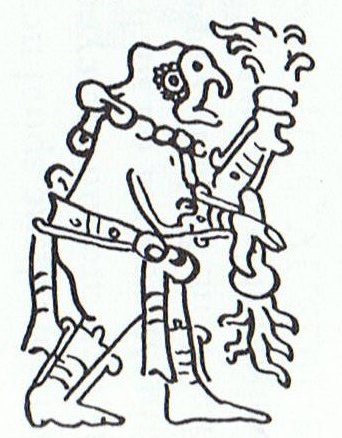
|
MARCH 7 |
8 |
9 |
10
(*354 = 434 - 80) |
11 (*355) |
12
(436 = 365 + 71) |
13 |
 |
 |
 |
 |
 |
 |
 |
|
(229
+ 229) |
Gb8-18 (230) |
Gb8-19 (460) |
Gb8-20 |
Gb8-21 |
Gb8-22 |
Gb8-23 |
|
CLOSE TO THE
SUN: |
|
ALGENIB PERSEI
= α
Persei
(50.0),
ο
Tauri (50.2),
ξ
Tauri (50.8)
GIENAH (γ Corvi)
|
σ
Persei (51.6) |
no
star listed (52) |
ψ
Persei (53.1)
ACRUX
(α CRUCIS)
|
→
Itzam-Yeh defeated
δ
Persei (54.7) |
Al Thurayya-27 (Many Little Ones) /
Krittikā-3 (Nurses of Kārttikeya) /
TAU-ONO (Six Stones)
ATIKS = ο Persei,
RANA (Frog) = δ Eridani
(55.1),
CELAENO (16 Tauri), ELECTRA (17), TAYGETA (19),
ν
Persei
(55.3),
MAIA (20), ASTEROPE (21), MEROPE (23)
(55.6) |
Hairy Head-18 (Cockerel) /
Temennu-3 (Foundation Stone)
ALCYONE
(56.1),
PLEIONE (28 Tauri),
ATLAS (27 Tauri)
(56.3)
|
|
May
10 (*50) |
11 |
12 |
13 |
(499) |
(500
= 365 + 135) |
16
(136) |
|
°May
6 (*46) |
7 |
8 |
9 |
10
(130) |
11 |
12 |
|
'April 13 (*23) |
4-14
(104) |
15
(470) |
16 (314 * 1½) |
17 (16 * 29½) |
18 (108) |
19
(*29) |
|
"March 30 (*9) |
31 |
"April 1 (80 + 11) |
2
(92) |
3 |
4 |
5
(460) |
|
9 he okeoke |
10 he apuka |
11 he ure vai |
12 he paiki |
13 he uriuri
Kumara ure omo uriuri |
14 he piu tahi |
15 he tuitui koviro |
|
Omo. To suck; omoaga, bulky
cloud; ragi omoaga cumulus; omoomo;
to suck repeatedly, to suckle; omotahi,
to win everything at a game (lit: to suck
whole): omotahi-mai-á e au, he has
cleaned me out; omotohi, full (of the
moon); ku-omotohiá te mahina, the moon is
full. Vanaga. Rima omo, infidelity,
faithless, unfaithful. Omoomo, to smack
the lips, to suck the breast, to smoke tobacco,
to taste of; hakaomoomo, to suckle, to
paint. Churchill. Ta.: Omotu, an ember, a
coal. Mq.: komotu, omotu,
firebrand. Churchill. Ariki (o)motongi.
Manuscript E:1.
Uri. 1. Dark; black-and-blue. 2.
Green; ki oti te toga, he-uri te maúku o te
kaiga, te kumara, te taro, te tahi hoki me'e,
once winter is over, the grasses grow green,
and the sweet potatoes, and the taro, and the
other plants. Uriuri, black; very dark.
Vanaga. Uriuri, black, brown, gray, dark,
green, blue, violet (hurihuri).
Hakahurihuri, dark, obscurity, to darken. P
Pau.: uriuri, black. Mgv.: uriuri,
black, very dark, color of the deep sea, any
vivid color. Mq.: uiui, black, brown.
Ta.: uri, black. Churchill. Uli,
s. Haw., the blue sky; adj., blue, cerulean,
green; uli-uli, verdure; adj., green,
dark-coloured, black. Sam., Tong., Fak., uli;
Tah., uri, blue-black, any dark colour.
Fornander. |
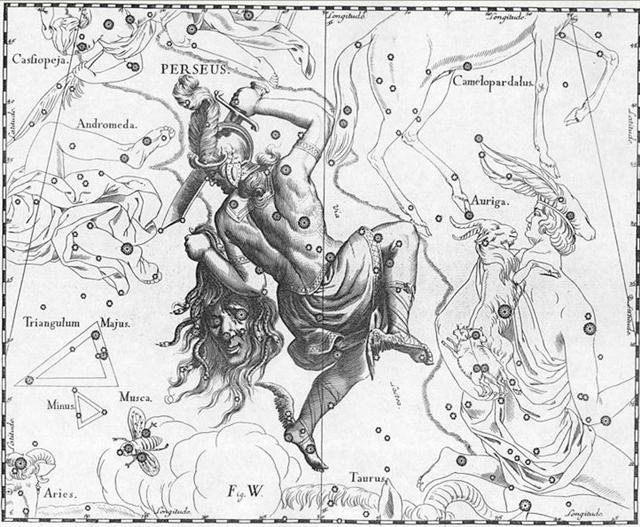 |
|
3-14
(73) |
MARCH 15 |
16 |
17 |
18 (542 - 100) |
19 (78 +
365) |
20
(*364) |
 |
 |
 |
 |
 |
 |
 |
|
Gb8-24
(465) |
Gb8-25 |
Gb8-26 |
Gb8-27 |
Gb8-28 |
Gb8-29 |
Gb8-30
(242) |
|
MENKHIB (Next to the Pleiades =
ζ
Persei
(57.6)
PORRIMA (γ Virginis) |
ZAURAK
(Boat)
=
γ
Eridani
(58.9) |
λ Tauri
(59.3), ν Tauri (59.9) |
4h (60.9)
JĪSHUĬ = λ Persei
(60.7)
COR CAROLI (α Canum Ven.) |
→ 1st
3-stone place
υ
Persei
(61.2) |
BEID
(Egg)
=
ο¹
Eridani
(62.2),
μ
Persei (62.8)
VINDEMIATRIX ( ε Virginis)
|
Al Dabarān-2 (The Follower)
HYADUM I =
γ
Tauri
(63.4)
*22.0 = *63.4 - *41.4 |
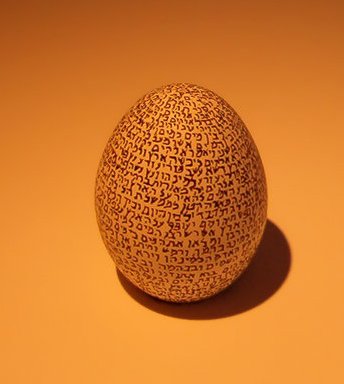 |
|
May 17
(137) |
18 (*41 + *17) |
19
(*424) |
20 |
21 |
22 |
23
(*428) |
|
°May
13 |
14 (*54) |
15
(*420) |
16 (136) |
17 |
18 (*58) |
19
(*424) |
|
'April
20 |
21 (111) |
22 |
23 |
24 |
25 (*400) |
26 (*36) |
|
"April 6 |
7 |
8 |
9 (464) |
10 (100) |
11 |
12 (*22) |
|
16 he aro piro
Kumara aro piro |
17 he pekepeke mea |
18 he pekepeke uri |
19 he aringa rikiriki
Kumara ariga rikiriki |
20 he tua tea |
20 he mamari kiakia |
1
he koro tea
Maika korotea |
|
Peke.1. To bite (of fish or lobster
pecking at fishhook). 2. To repeat an action:
he-peke te rua; ina ekó peke-hakaou te rua don't
you do it a second time; ina ekó peke hakaou-mai
te rua ara, don't come back here again. Vanaga.
To succeed, to follow. Pau.: peke, to follow,
to accompany. Ta.: pee, to follow. Churchill.
Mgv.: Pekepeke. 1. The tentacles of the
octopus retracted. Mq.: peke, to tuck up the
clothes. Ma.: pepeke, to draw up the legs and
arms. 2. A crab. Ha.: pee-one, a crab that
burrows in the sand. Churchill.

Mamari. Egg, fish roe.
mâmari ata rauhau, last small egg laid by a hen
before she turns broody. Vanaga. Egg (of fowl or
fish), (gamamari), (Cf. komari.);
mamari punua, chicken in the shell. Churchill.
Kiakia.
Dove, gull T. Mgv.: kiakia,
the cry of the kotake (a white marine bird.)
Churchill.
Kumara. Sweet potato. The main varieties
are: kumara pita, kumara rega moe tahi uriuri,
kumara rega moe-tahi teatea, kumara rega vî'e,
kumara aro piro, kumara
paka taero, kumara ariga
rikiriki, kumara uriuri, kumara ûka teatea,
kumara ure omo, kumara ha'u pú,
kumara ure
omo uriuri. Vanaga.
Sweet potato. P Pau., Mgv.: kumara, id. Mq.:
kumaá, id. Ta.: umara, umaa,
id. Churchill.
Koro. 1. Father (seems to be
an older word than matu'a tamâroa). 2. Feast,
festival; this is the generic term for feasts
featuring songs and banquetting; koro hakaopo,
feast where men and women danced. 3. When (also:
ana koro); ana koro oho au ki Anakena,
when I go to Anakena; in case, koro haga e
îa, in case he wants it. Vanaga. If.
Korokoro, To clack the tongue (kurukuru).
Churchill. Ma.: aokoro, pukoro, a halo
around the moon. Vi.: virikoro, a circle
around the moon. There is a complete accord from
Efaté through Viti to Polynesia in the main use of
this stem and in the particular use which is set to
itself apart. In Efaté koro answers equally
well for fence and for halo. In the marked advance
which characterizes social life in Viti and among
the Maori the need has been felt of qualifying
koro in some distinctive manner when its
reference is celestial. In Viti virimbai has
the meaning of putting up a fence (mbai
fence); viri does not appear independently in
this use, but it is undoubtedly homogenetic with
Samoan vili, which has a basic meaning of
going around; virikoro then signifies the
ring-fence-that-goes-around, sc. the moon. In the
Maori, aokoro is the cloud-fence. Churchill
2. |
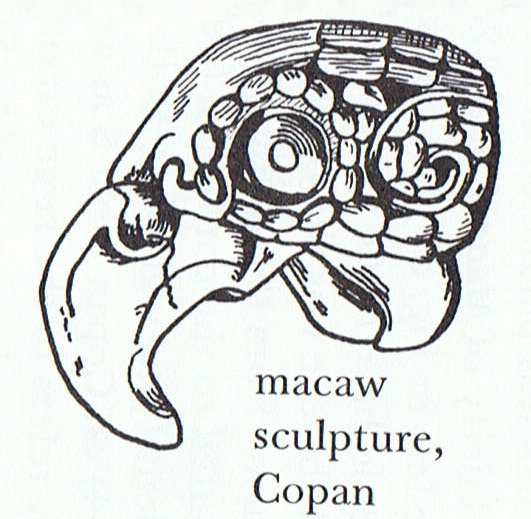
134 (May 14) + 70 = 204 (July 23). At the time
of rongorongo this was
3 days before the position of the 'nose' of Ursa Major
(7-Macaw = Itzam Yeh):
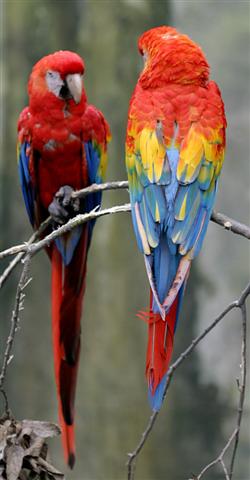

... The 'tip of its tail' is at Benetnash
(Alkaid), rising heliacally 7 months
beyond the equinox (and precisely 4 lunar months
beyond the June solstice, 172 + 4 * 29½ = 290).
Thus the extension of Ursa Major is 209.5 -
128.4 = 84 days or 12 weeks. 364 - 84 = 280 (=
40 weeks) ... On the other hand, we could say
the important part of Ursa Major is beginning
with Dubhe, the first of its 7 great
stars - or 8 if we count also Alcor -
constituting the familiar asterism we all know
as the Big Dipper ...

At the time of Bharani heliacal ο Ursae Majoris
came a fortnight after the Explorers had 'made
landfall' on Easter Island (in Te Maro 1)
and this was 18 synodic lunar nights after the
beginning of the year. 18 * 29½ = 531.
  
|
MAY 20 (140) |
21 |
22 |
23 (*63) |
24 (144 = 12 * 12) |
 |
 |
 |
 |
 |
|
Ga3-1 (60) |
Ga3-2 |
Ga3-3 |
Ga3-4 (63) |
Ga3-5 |
|
CLOSE TO THE SUN: |
|
AL
TARF
(The End) = β Cancri
(124.3)
RAS ALGETHI
(α Herculis)
|
χ Cancri (125.2),
BRIGHT FIRE = λ Cancri
(125.4)
*84.0 = *125.4 - *41.4 |
AVIOR = ε Carinae
(126.4), φ Cancri (126.8)
*85.0 = *126.4 - *41.4 |
ο
Ursae Majoris
(127.4)
*86.0 = *127.4 - *41.4 |
Pushya-8 (Nourisher)
υ Cancri (128.1),
θ CANCRI
(128.2) |
|
July 23 (204) |
24 (*125) |
25 |
26 |
27 (208) |
|
°July 19 (200) |
20 (*121) |
21 |
22 / 7 |
23 (204) |
|
26 (177 =
6 * 29½) |
'June 27 |
28 |
29 (*100) |
SIRIUS |
|
"June 12 |
13 (*84) |
14 (165 +
365) |
Te
Maro 15 (18 * 29½) |
16 |
|
Makoi got up and began to
familiarize himself with the (new) land.
(This took place) on the fifteenth day
of the month of June ('Maro'). He
went toward the sheer face of the rocks
(titi o te opata), was astonished
(aaa), came up to the middle (of
the outer rim of the crater), and stood
at the very edge.

He
looked down and saw the 'Pu
Mahore of Hau Maka'
(on the coast) and said, 'There it is,
the hole of the mahore fish of
Hau Maka!' He turned his face and
looked toward the back (i.e., in the
direction of the crater). No sooner had
he seen how the dark abyss opened up
(below him), when a fragrant breeze came
drifting by. Again Makoi said,
'This is the dark abyss of Hau
Maka'. He
turned around, walked on in utter
amazement, and arrived at the house. He
spoke to Ira, 'Hey you, my
friends! How forgetful we (truly) are.
This place is adequate (? tau or
'beautiful'), the dark abyss lies there
peacefully!'
Ira
replied, 'And what should that remind us
of up here?' All arose and climbed up.
They went on and arrived; they all had a
good look (at the inside of the crater).
They returned home and sat down. Night
fell, and they went to sleep. |
|
The 4 places which Makoi saw
by himself:
Possibly these places were alluding
also to the change from the Julian
spring equinox to the Gregorian
spring equinox:
... When the Pope
rearranged the day for spring
equinox from number 84 ('March 25)
to number 80 (ºMarch 21) the earlier
Julian structure was buried, was
covered up (puo). At the same
time the Pope deliberately avoided
to correct the flow of Julian
calendar days for what he may have
regarded as 4 unneccesary leap days
prior to the Council of Nicaea. Thus
his balance sheet for days was in
order. The day numbers counted from
the equinox were increased with 4
and this was equal to allowing the 4
'unneccessary' leap days to remain
in place. But he had moved spring
equinox to a position which was 4
days too early compared to the
ancient model ...
These '4
unneccessary leap days' (prior to
the Council of Nicaea) were equal in
number to the precessional distance
in time between the Pope and the
time of rongorongo. The Gregorian
calendar could therefore be easily
understood by the Easter Islanders.
The Pope had created a 'crooked
calendar' but since his time the
precession had fixed it ...
 |
|
MAY
25 (5-25) |
26 (*266) |
27 |
28 (348) |
 |
 |
 |
 |
|
Ga3-6 |
Ga3-7 |
Ga3-8 |
Ga3-9 (68) |
|
CLOSE TO THE SUN: |
|
Āshleshā-9 (Embrace) /
Willow-24 (Stag)
π¹ Ursa Majoris,
δ HYDRAE (129.6),
AL MINHAR AL SHUJĀ = σ Hydrae,
MUSEIDA
= π² Ursae Majoris
(129.9)
RAS
ALHAGUE (α Ophiuchi)
|
Al Nathrah-6 (Gap)
BEEHIVE (Exhalation of Piled-up
Corpses)
= ε Cancri,
η Pyxidis (130.4),
XESTUS = ο Velorum
(130.5), ζ Pyxidis (130.7),
ASCELLUS BOREALIS = γ Cancri,
β Pyxidis (130.9)
*89.0 = *130.4 - *41.4 |
Extended Net-26a (Ox) /
Arkū-sha-nangaru-sha-shūtu-12
(Southeast Star in the Crab)
η Hydrae (131.0),
ASCELLUS AUSTRALIS = δ Cancri
(131.4),
KOO SHE (Bow
and Arrow)
= δ Velorum
(131.6), α Pyxidis (131.8), ε Hydrae
(131.9)
*90.0 = *131.4 - *41.4 |
ι Cancri (132.0), ρ Hydrae (132.4)
*91.0 = *132.4 - *41.4 |
|
... A man had a daughter who
possessed a wonderful bow and arrow,
with which she was able to bring
down everything she wanted. But she
was lazy and was constantly
sleeping. At this her father was
angry and said: 'Do not be always
sleeping, but take thy bow and shoot
at the navel of the ocean, so that
we may get fire.' The navel of the
ocean was a vast whirlpool in which
sticks for making fire by friction
were drifting about. At that time
men were still without fire. Now the
maiden seized her bow, shot into the
navel of the ocean, and the material
for fire-rubbing sprang ashore. Then
the old man was glad. He kindled a
large fire, and as he wanted to keep
it to himself, he built a house with
a door which snapped up and down
like jaws and killed everybody that
wanted to get in. But the people
knew that he was in possession of
fire, and the stag determined to
steal it for them. He took resinous
wood, split it and stuck the
splinters in his hair. Then he
lashed two boats together, covered
them with planks, danced and sang on
them, and so he came to the old
man's house. He sang: 'O, I go and
will fetch the fire.' The old man's
daughter heard him singing, and said
to her father: 'O, let the stranger
come into the house; he sings and
dances so beautifully.' The stag
landed and drew near the door,
singing and dancing, and at the same
time sprang to the door and made as
if he wanted to enter the house.
Then the door snapped to, without
however touching him. But while it
was again opening, he sprang quickly
into the house. Here he seated
himself at the fire, as if he wanted
to dry himself, and continued
singing. At the same time he let his
head bend forward over the fire, so
that he became quite sooty, and at
last the splinters in his hair took
fire. Then he sprang out, ran off
and brought the fire to the people
... |
|
July 28 |
29 (*130) |
30 |
31 (212) |
|
°July 24 |
25 |
26 (*127) |
27 (208) |
|
'July 1 |
2 |
3 (*104) |
4 (185) |
|
"June 17
Te Kioe Uri |
18
Te
Piringa Aniva |
19 (*90)
Te Pei |
20 (171 = 185 - 14)
TE POU |
|
When it grew light,
Makoi arose again. He went
off to further explore the area. He
went along and came to the 'dark
rat'. He looked around and said:
'Here we are at the dark rat of
Hau Maka'. He gave it the
name Te Kioe Uri A Hau Maka.
He went on and came to Te Piringa
Aniva. When he arrived there, he
looked around and gave the name
Te Piringa Aniva. He went on and
came to Te Pei, looked
around, and said, 'Here it is!' So
he gave the name Te Pei A Hau
Maka. He went on, all alone he
went on, and came to Te Pou.
When he arrived there, he looked
around and again said, 'Here it is!'
and gave the name Te Pou A Hau
Maka. |
|
For some reason
nothing was said about Te Manavai,
which in the journey of the
kuhane came between Poko Uri
and Te Kioe Uri.
... The dream
soul climbed up and reached the
rim of the crater. As soon as
the dream soul looked into the
crater, she felt a gentle breeze
coming toward her. She named the
place 'Poko Uri A Hau Maka O
Hiva'. The dream soul
continued her search for a
residence for King Matua.
The dream soul of Hau Maka
reached (the smaller crater)
Manavai and named the place
'Te Manavai A Hau Maka O Hiva'.
The dream soul went on and
reached Te Kioe Uri. She
named the place 'Te Kioe Uri
A Hau Maka O Hiva' ...
... Manavai Hollow where
rainwater accumulates; anciently,
small, round gardens, preferably
situated in low shady spots, where
the mahute tree was grown.
Vanaga. 1. Brain. 2. Valley, ravine,
river, torrent, brook; manavai
miro, orchard, Mq.: manavai,
valley,
brook. Ta.: anavai,
river, brook. It scarcely appears
that these are fully coordinate. In
Tahiti anavai has a clear
etymology, ana
meaning the bed of a
stream. In Rapanui and in the
Marquesas mana most readily
associates with maga, as
water in a forked bed. Churchill
...
However, Manuscript
E seems to offer an explanation in
the way Makoi remembered how
he documented the name: ... I wrote
(ta) Te Manavai A Hau Maka
on the surface of a banana leaf
(kaka), and this is how I
left it ... |

... A sidelight falls
upon the notions connected with the stag by
Horapollo's statement concerning the
Egyptian writing of 'A long space of time: A
Stag's horns grow out each year. A picture
of them means a long space of time.'
Chairemon (hieroglyph no. 15, quoted by
Tzetzes) made it shorter: 'eniautos:
elaphos'. Louis Keimer, stressing the
absence of stags in Egypt, pointed to the
Oryx (Capra Nubiana) as the
appropriate 'ersatz', whose head was,
indeed, used for writing the word rnp
= year, eventually in 'the Lord of the
Year', a well-known title of Ptah. Rare as
this modus of writing the word seems to have
been - the Wörterbuch der Aegyptischen
Sprache (eds. Erman and Grapow), vol. 2,
pp. 429-33, does not even mention this
variant - it is worth considering (as in
every subject dealt with by Keimer), the
more so as Chairemon continues his list by
offering as number 16: 'eniautos: phoinix',
i.e., a different span of time, the
much-discussed 'Phoenix-period' (ca. 500
years) ...
Allen has noted regarding ο Ursae Majoris:
... Bayer said that 'the
Barbarians' called this [ο]
Muscida, a word apparently coined in
the Middle Ages for the muzzle of an animal,
the feature of the Bear, that the star marks
... π¹, 3.2, and
π², Binary, 4.8
and 9.5, flushed white and sapphire, with
ο, π,
ρ, A, d,
and some others in the eyes, ears, and
muzzle of the Bear, were the asterism that
Kazwini knew as Al Thibā', the
Gazelle ...

|























